Expression of the Emotions
Darwin started writing The Expression of the Emotions in Man and Animals (1872) as a closing chapter to Descent, but quickly came to realize that the subject deserved a book of its own. He admitted to Wallace: “It is simply a ‘hobby- horse’ with me about 27 years old.” As so often happened, what started as a ‘hobby-horse’ grew larger in Darwin’s hands and became an original contribution to science.
Expression included artwork that Darwin commissioned, and it was one of the first scientific books to rely on photography. He collected pictures from various photographers, including some from physicians at Victorian insane asylums. Darwin observed expression in animals and children, and also studied facial musculature and consulted physiologists. The worldwide universality of expression was another subject of his investigation. As a footnote to Descent, he concluded that the similarity of expression among all people, and the clear derivation of most expression from animals, provided more evidence of human descent from non-human ancestors.
At the same time, Darwin noted which expressions were exclusively human, including those of grief or anxiety, and blushing. He saw moral value in expression, because communicating approval, love, or sympathy could only improve our welfare as social animals.
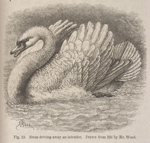 |
Charles Darwin. The Expression of the Emotions in Man and Animals. London: J. Murray, 1872. First edition. [zoom] Darwin compared the movement and musculature of fear and anger in animals, such as this swan driving away intruders, to the aggressive bristling of hair along a dog’s neck and back. He also pointed out the analogous reaction in the human scalp and skin associated with fear, namely “goose-bumps.” |
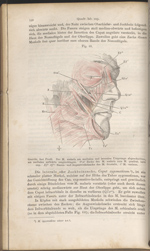 |
Jacob Henle. Handbuch der Systematischen Anatomie des Menschen. Braunschweig: F. Vieweg, 1856-[71]. Vol. 1. [zoom] Darwin adapted two of German anatomist Jacob Henle’s diagrams for use in Expression. To assist the reader, Darwin labeled the muscles that he referred to in his book. |
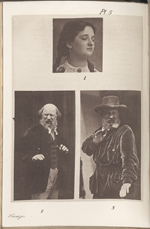 |
Charles Darwin. The Expression of the Emotions in Man and Animals. London: J. Murray, 1872. [zoom] The London photographer, Oscar Rejlander, worked closely with Darwin. Using himself as a model, Rejlander expressed disgust and contempt, as did the woman pictured above. Darwin found that the movement of the lips was analogous to that of dogs and other mammals defensively exposing their canine teeth. |
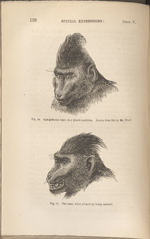 |
Charles Darwin. The Expression of the Emotions in Man and Animals. London: J. Murray, 1872. [zoom] Darwin also noted the similarity between human expressions of happiness to the pleased face of a Celebes ape (now Macacus niger), pictured below, when caressed. |
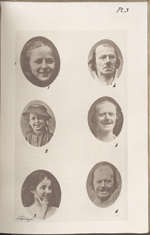 |
Charles Darwin. The Expression of the Emotions in Man and Animals. London: J. Murray, 1872. [zoom] Shown in the lower right-hand corner is a man whose facial nerves no longer felt pain. He was grimacing in response to an electrical stimulus to his facial muscles. By asking people for their reactions to this photo and the one above it, Darwin learned that they could easily tell which expression was produced naturally. |
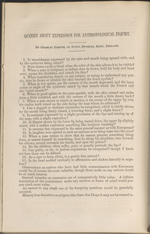 |
Smithsonian Institution. Annual Report of the Board of Regents of the Smithsonian Institution … Washington: U.S. Govt. Print. Off., 1867. [zoom] Making full use of the expansion of the British Empire, Darwin sent this list of queries about expression to people he knew throughout the world. The list is one of the first uses in science of a “questionnaire”, and probably the first to be distributed internationally. Darwin’s intent was to see if he could establish whether people across the globe expressed emotions in essentially the same way, further confirming the unity of the human races. |